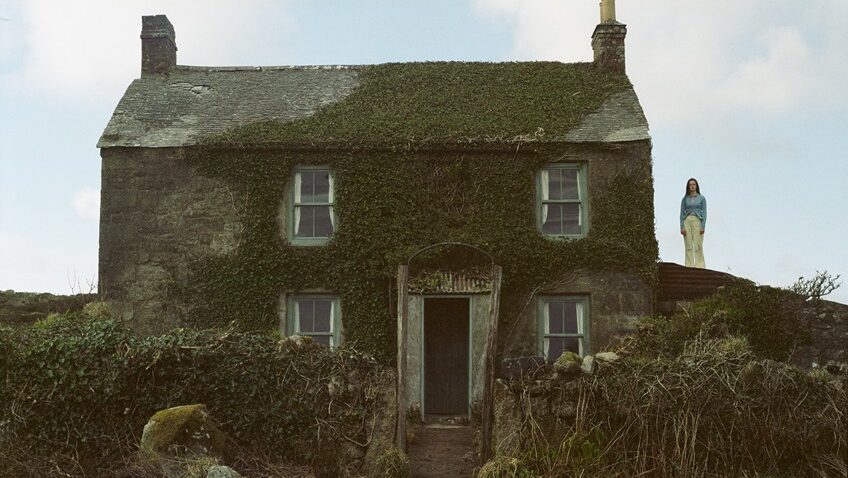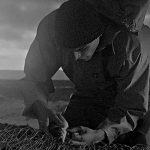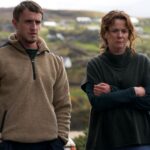Joyce Glasser reviews Enys Men (January 13, 2023) at BFI Southbank and cinemas UK-wide – Cert 15, 96 mins.
Mark Jenkin’s 2019 film Bait, set in Cornwall, was more than a calling card: his do-it-yourself (writer, director, cinematographer, editor, sound designer, composer and film developer) wonder marked him as one of the most original and exciting British directors in years. He turned back the clock, using old, disintegrating camera equipment and 16mm black and white film which he developed himself. This produced a grainy, rugged feel that complemented the story and main character. If Enys Men does not generate the same excitement it is because for all the beguiling set-up and mesmerising technique there’s no story to engage us.
With Enys Men, which means Stone Island, Jenkin also turns back the clock, setting his film in 1973, although he is now filming in colour, developing his 16mm film in a laboratory and blowing it up to 35mm to increase the graininess. The tension in Bait crosses over into this folk-horror film, although it is, initially, at least, the repetition and the very structure of the film that provide the tension.
It is spring, and the Volunteer (Mary Woodvine, from Bait), a fit, independent, focused, forty-something woman with piercing blue eyes seems to be the sole inhabitant of a wind-swept island off the coast of Cornwall. But is she?
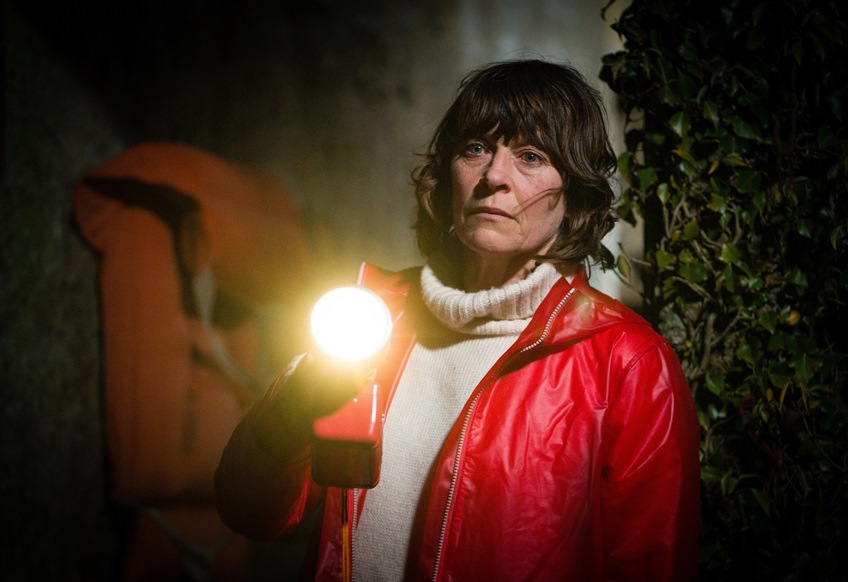
Later in the story when a Boatman – and perhaps a lover – (Edward Rowe, the protagonist in Bait) delivers petrol to the cottage, he asks if she likes being on her own. The Volunteer answers matter-of-factly, ‘I’m not on my own,’ acknowledging, not the intermittent radio communications that speak of grief and drownings, but the various phantom islanders we have been noticing.
These include miners in a derelict mine shaft into which The Volunteer throws a stone or two every day as if measuring the depth; the drowned fishermen remembered by a plaque in the harbour, a preacher (John Woodvine) preaching outside a chapel; children in May Day costumes outside of her cottage, (or dancers turned to stone for dancing on the sabbath); and a young woman (Flo Crowe) who haunts the cottage.
This young woman with long brown hair has a habit of standing on the roof which concerns the Volunteer enough to break her silence and warn the younger girl not to. Who is this young woman? Is she a former occupant of the cottage, the Volunteer’s daughter or, with a scar on her abdomen that resembles the ominous scar on The Volunteer, herself in the past or future?
We learn nothing about the Volunteer or her contract, but her duties are clear. Every day, wearing the same comfy white jumper, jeans, boots and a red rain jacket, she walks to a cliff overlooking the surf crashing against the rocks, to examine a group of some half a dozen flowers, sticking a thermometer in the soil. After tossing a stone down the mine shaft she wanders home paying particular attention to a stone monolith which dominates the hilly moor that separates her house from the sea.
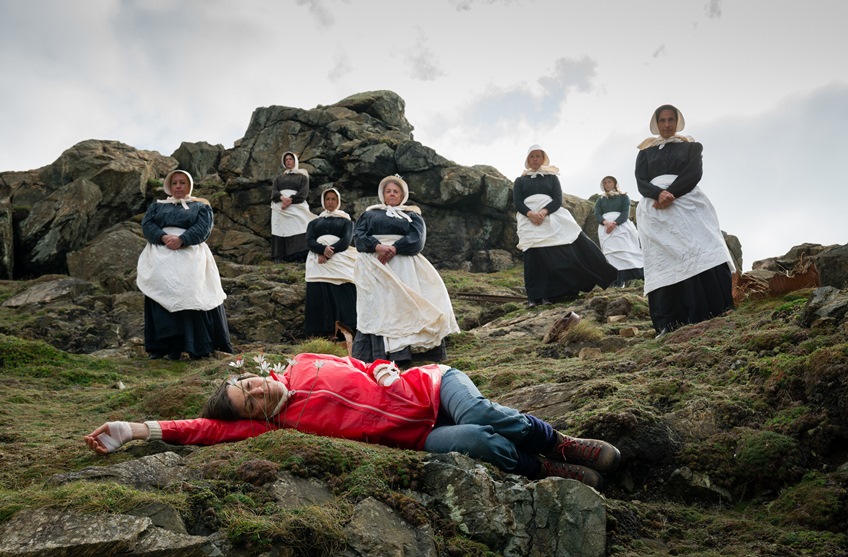
Pagan stones and the odd discovery of a sign (‘oven’) from a shop and a discarded yellow fisherman’s raincoat – identical to that worn by the boatman and by a body floating face down in the harbour – are the only distractions to this hypnotic routine, which ends with a logbook on her desk. The camera focuses on the logbook. Date – 20 April to 2 May 1973. In the second column is the temperature: 14.3 almost daily, In the third column are observations: no change. There are no entries from the 13th – the first date in the book to 19 April.
The outing to the flowers is the Volunteer’s only assignment, which seems a bit strange. Night starts early with tea, a bath, relaxing by the fireplace – all thanks to an old generator which runs out of petrol half-way through the story just as the Volunteer runs out of tea. Every night she reads a bit by candlelight but not much. The book she is reading, ironically entitled a Blueprint for Survival, is thin, and she always appears to be at the beginning.
And then, just as the intriguing repetition starts to wear thin, there is a change in the “observations” column. Lichen are growing on the delicate white flowers. Lichen are not plants, but like them, they produce their own nutrition by photosynthesis. They are not parasitic, but are using the flowers to live on, creating an extended ecosystem. This would not be significant (the Volunteer does not have the expertise to specify which of the 20,000 varieties of lichen these are), except that the Volunteer has a scar across her abdomen that has moss-like lichen growing from it.
Is this a clue that the film has a contemporary environmental message? If so, not dramatised as convincingly as in Bait. There Jenkin looked at the uneasy tension between traditional values and zero-carbon footprint ways of life in coastal villages versus the much needed capital brought by tourism and second homeowners. Here, it seems Jenkin is expressing the uneasy harmony between humans and nature.
References abound to horror films like Don’t Look Now, The Wicker Man, and the folk horror movies of filmmakers like Ben Wheatley (A Field in England, Sightseers) not to mention the Hammer horror The Plague of the Zombies, set in a small village in Cornwall. But here nothing in the apparitions on the island is new or different. Once we realise there is no more story to contextualise these references and the apparitions, we are left adrift.
How can we know if the stone monolith has really moved to the cottage like Great Birnam Wood to high Dunsinane Hill, or if the Volunteer is imagining it? Is the Volunteer haunted by the past, reliving it or seeing the future? Who has sent her there or has anyone sent her there? What’s going on?
Perhaps the clue is in the blurb on the back of the only book we see the Volunteer read, The Blueprint for Survival. It reads “Nightmarish, convincing…after reading nothing will appear quite the same again.” Perhaps the Volunteer has finished the book after all.

